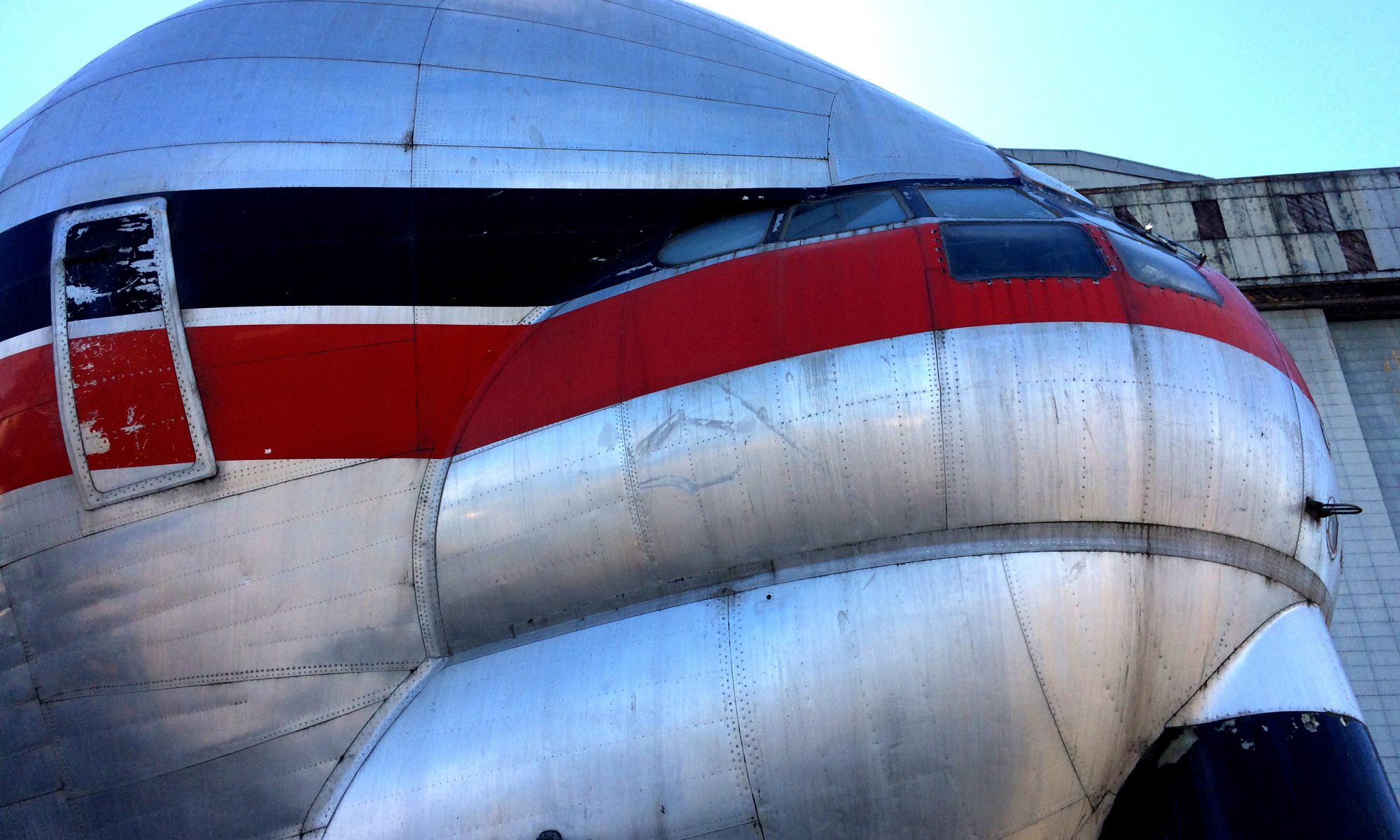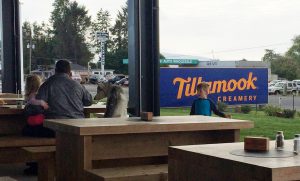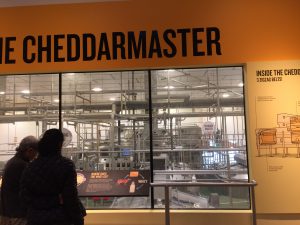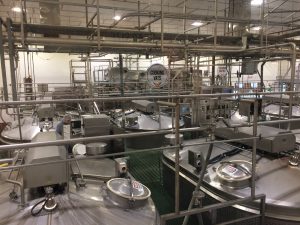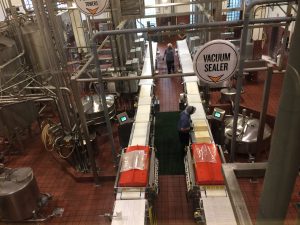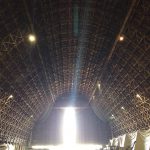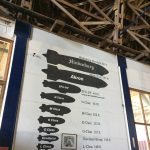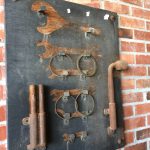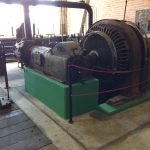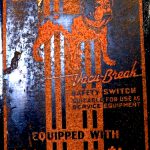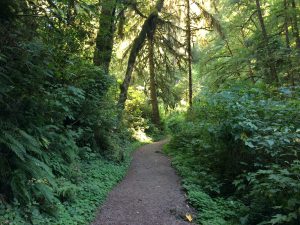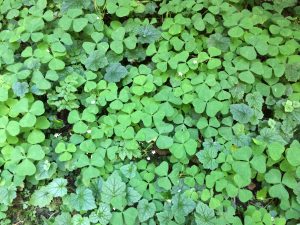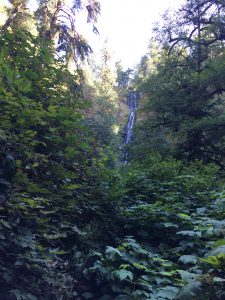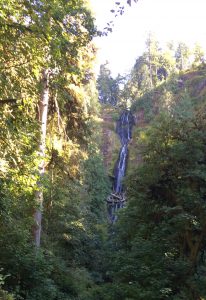Blimps, Cheese, and a Waterfall
Tillamook Creamery
If you recognize the name Tillamook at all, no doubt it is because of their cheese. In 1854 some dairy farmers in Tillamook formed a cooperative to build a sailing ship to transport their goods up the Columbia to sell them in Portland. Somewhere between now and then these farmers figured out the magic formula for what is now called agrotourism. Today there are about 90 family farms that make up the collective, and the Tillamook Creamery hosts over a million visitors each year.
All that attention translates into a whole lot of revenue from cheese and ice cream, to the tune of a projected one billion dollars in sales this year. All those corn maze operators back East need to come out to the Oregon coast and learn how it’s done from these folks! What started as a marketing sideline has grown into a full-blown tourist attraction, so the old cheese factory barn was torn down and replaced with a fancy new facility in 2017, complete with an elevated observation hall above the factory floor.
I arrived at the creamery on a Sunday afternoon, so production was slow, but the packaging lines were running. You could see big 40 pound bricks being wrapped before heading off to the aging warehouse, and their older cousins being cut up for final packaging after being paroled from the cheese lockup. Of course, there were plenty of opportunities to eat, including all the free samples you care to toothpick.
After your tour and sampling, you join the crowds to purchase your favorite dairy. After loading up on curds and aged cheddar, I went all-in when I saw Marionberry Pie on the flavor list at the ice cream counter. The lines are long, but it is a festive atmosphere; who isn’t in a good mood when deciding what kind of ice cream to get?
Marionberry is a particular hybrid of blackberry invented by the smart people at my grandfather’s Alma mater, Oregon State. My grandmother grew them, and I’m not shy to say that that the pies she made are without a doubt the best dessert ever made by anyone in recorded human history. This special fruit is rarely seen outside of the Pacific Northwest, but occasionally you can find Marionberry jam in gourmet outlets. It’s not the same as the fresh berries, but if you are lucky enough to encounter some, buy it. You’ll thank me later.
Tillamook Air Museum
If you read my post about the Everygreen Aviation Museum in McMinnville, then you probably have an idea about my impression of this place. Yes, Tillamook is the shabby country cousin of Everygreen’s city slicker operation, but that’s part of what makes it so endearing. Honestly, I loved the authenticity and tenacity of the TAM, despite the run-down and often random collection of exhibits. In contrast to Evergreen’s new building in a business park, Tillamook was a real operational Naval Air station during World War II.
Immediately after the attack on Pearl Harbor there was a real concern about the West coast being invaded by the Axis, and the Japanese Navy did actually make sporadic attacks on the US with submarines from California to Alaska. The US wanted to prevent such incursions, but the greater need for ships in the European and South Pacific theaters combined with the great length of the coastline made it impossible for the Navy to effectively guard the coast with warships.
The chosen solution was decidedly old school – the Navy would patrol the coast with balloons. Blimps had several characteristics that lent themselves to the task. They could easily spot submarines from a vantage point several hundred feet above the ocean and stay aloft for days at a time while expending very little fuel. A blimp also required only a small quantity of aluminum and steel compared to an airplane, crucial since this was a low priority and materials were being rationed.
So blimps would be the thing, but there was another problem: balloons didn’t tolerate bad weather very well, and there was plenty of that on the coast. Big airships required a big building to protect them, and building such enormous hangars via traditional methods would negate the material savings that made blimps attractive in the first place. Catch 22.
But in 1942 there was one commodity that we had plenty of on the home front that was not being monopolized by the military, and that was trees. The engineers got to work on the problem and the mills of the Pacific Northwest began turning out millions of board feet of lumber that were vacuum treated with salt to make the wood fire resistant. Twin hangars were built completely out of wood at Tillamook and other points along the coast. The largest open span buildings ever made, each had a 7-acre footprint and could hold 8 blimps. The hangars are so big they have their own weather systems inside.
With the end of the war, NAS Tillamook was decommissioned. The giant hangars were repurposed as lumber mills themselves for a while, but as that industry faded they were largely abandoned in the eighties. Local historians began an effort to restore Hangar B as a museum, and Hangar A was relegated to use as a storage barn. In 1992, the 135,000 bales of straw packed in Hangar A caught fire and no amount of fire retardant could mitigate the heat of 7000 tons of flaming fiber.
Today only a few buildings of NAS Tillamook remain, most in poor repair. The concrete foundation of Hangar A remains and the area has been put to use as a composting operation. Hangar B continues to struggle to survive with an oddball collection of exhibits and a few planes that, like the hangar itself, are in need of extensive restoration before they would be welcomed into the Smithsonian or another top tier museum.
Still, the ambiance of the huge hangar is intoxicating – the pervasive smell of old wood, the dim high ceiling pierced by a shaft of light from the partially open doors, the occasional rustle of the colony of barn owls that live high above in the rafters. Tillamook Air Museum doesn’t get a lot of visitors, and the place is huge, so you feel like it’s all yours. I spent a long time there and enjoyed it – immensely.
Learn about the bizarre Mini Guppy
Munson Creek Falls
On my way out of the Tillamook valley I took the easy hike up to Munson Creek Falls. The trail climbs a bit through a lush fern-covered cut until you get a nice view of the high falls. It appears the trail used to continue, but now it has been closed off before you reach the base of the falls since they’ve made the area a State Park. It’s in name only though, because other than marking the trail and maintaining a parking area at the trailhead there is no further development or facilities here, not even a vault toilet.
It was a pretty spot and a nice natural counterpoint to the human endeavors I had been visiting in Tillamook.
Next time: Down the gorgeous Oregon Coast!
